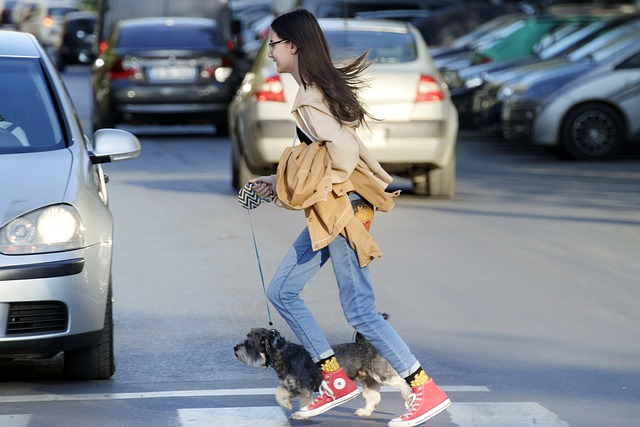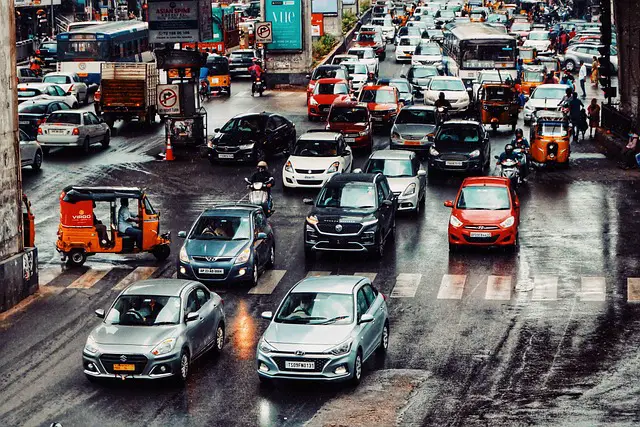Creating a 15-minute city is a promising concept but is not without its challenges. One of the biggest challenges is the tyranny of bureaucrats who may stand in the way of implementing plans that prioritize the needs of the community over vested interests. Additionally, limited public spaces make it difficult to create a walkable city. It has been observed that most cities lack walkability, which can lead to severe environmental consequences.
Unsustainable development practices result in poorly planned cities that become increasingly difficult to navigate. Moreover, given the ongoing climate crisis, cities need to implement sustainable solutions that can mitigate the impact of climate change. In the following sections, we will explore each of these issues in-depth to understand their impact on creating a 15-minute city.

Related: 15-Minute City
1. Tyranny of Bureaucrats
Despite its promising potential, the 15-minute city concept has been met with negative reactions from various groups. One primary concern is the potential involvement of bureaucrats in implementing such models. Some fear that bureaucrats may prioritize their own interests over the needs of the community, leading to inefficient or ineffective policies.
Furthermore, some critics of the 15-minute city concept argue that its implementation may lead to a loss of personal freedom. Strict regulations and policies, they claim, may limit individuals’ ability to make choices that align with their values and preferences. This fear is especially prevalent among those who view government intervention as a threat to personal liberties.
Conspiracy theories and criticisms have also arisen around the 15-minute city concept. Jordan Peterson, for example, has spoken out against the idea, claiming that it could lead to an Orwellian society in which citizens are monitored and controlled by a centralized government. While such theories may be unfounded, they nonetheless contribute to negative perceptions of the 15-minute city concept.
Overall, concerns around the tyranny of bureaucrats, loss of personal freedom, and conspiracy theories have led to negative reactions towards the 15-minute city concept. However, it is important to address these concerns while also recognizing the significant benefits that the concept can bring to communities, including improved accessibility, sustainability, and social interaction.
2. Limited Public Spaces
Public spaces are essential to creating a sense of community and fostering social interaction in cities. They serve as gathering places for people to connect, relax, and engage with one another. Unfortunately, a lack of public spaces in many urban areas has been a persistent problem. This scarcity of public spaces has a significant impact on people’s well-being, especially in terms of their physical and mental health.
Without public spaces, cities become more isolated and disconnected. People may feel more socially isolated and disconnected from their community, leading to feelings of loneliness and depression. Lack of access to outdoor spaces also means that people may not have opportunities to participate in physical activities such as walking, running, or biking. These activities are essential to maintaining good physical health and can help prevent chronic health conditions such as obesity and heart disease.
However, there are several potential solutions to address the lack of public spaces in cities. One approach is repurposing underutilized areas such as vacant lots or abandoned buildings into public spaces. This strategy not only provides more public spaces but also reduces blight in a community. Additionally, building new public spaces like parks and community gardens can increase access to outdoor areas and promote social interaction.
Designing public spaces to be inclusive is also crucial in creating a sense of community. People with disabilities, for example, should have equal opportunities to access and enjoy public spaces. This may include features such as wheelchair ramps, tactile paving, or braille signage to improve accessibility.
Creating more public spaces and ensuring that they are inclusive can have a significant positive impact on people’s well-being. By building stronger communities through public spaces, people can enjoy improved mental and physical health and feel more connected to their city.
3. Lack of Walkability in Most Cities
Lack of walkability is a common problem in many cities around the world. This problem is often caused by a number of factors, including urban planning patterns that prioritize automobile use and create separated zones for residential, retail, and business areas. Modern urban planning has been focused on the use of motor vehicles, roads, and parking structures. This results in disconnected and isolated communities that make it challenging for people to walk or cycle as a primary means of transportation.
Despite the challenges, retrofitting existing cities to become more walkable is possible. The process requires significant changes, both in terms of infrastructure and mindset. Implementing traffic-calming measures is one solution that can make a considerable difference. This involves strategies such as reducing speed limits, installing roundabouts, and introducing shared spaces. Such measures can help improve pedestrian safety while also encouraging motorists to drive at slower speeds.
Creating pedestrian-friendly infrastructure is another essential step towards increased walkability. Cities can address this by building safe walking paths and installing safer street crossings. This infrastructure can also include amenities such as seating, lighting, and public restrooms, which can make walking a more enjoyable experience. Dedicated pedestrian zones also create a safer and more welcoming pedestrian environment, while increasing walkability in urban areas.
Another solution is to improve public transportation to reduce the need for car-based transportation. This could involve developing integrated systems to link buses, light rail, and other forms of public transport while also addressing the issue of last-mile connectivity. Better public transportation enables residents to move efficiently and comfortably while reducing the use of private vehicles.
In summary, creating walkable communities is vital for improving urban life. While retrofitting existing cities can present challenges, implementing traffic-calming measures, developing pedestrian-friendly infrastructure, and improving public transportation are potential solutions that can help make cities more walkable and vibrant. By prioritizing walking and other forms of active transportation, we can create a more sustainable future for all.
4. Unsustainable Development Practices
Historical sustainability practices have often been focused on expanding outward, with urban planning that embraces suburbanization and car-oriented living. This mindset has been reflected in decades of unsustainable development practices, including urban sprawl and car-centric planning. As a result, many cities have experienced increased traffic congestion, higher levels of carbon emissions, and decreased public health.

In many cases, the prioritization of parking lots over public spaces has limited walkability and access to green spaces, creating a cycle of further car-dependency. This has also contributed to social isolation and a lack of community interaction, making urban environments less livable and less equitable for all.
The urgent need for sustainable development practices in cities cannot be overstated, especially in the face of the ongoing climate crisis. By prioritizing pedestrian and bike-friendly infrastructure, expanding public transportation, and supporting effective land use and zoning policies, cities can begin to optimize for a more sustainable, positive future.
In order to create more livable and equitable urban environments, it is essential to prioritize sustainability and walkability as integral parts of urban planning. By reducing car-dependency and prioritizing sustainable development, we can address the root causes of urban problems such as traffic congestion, carbon emissions, and public health issues. Now is the time to invest in sustainable development practices to create vibrant, walkable cities that are built to last.
5. Climate Crisis and Its Impact on Cities
The climate crisis has had a significant impact on urban areas globally, with rising sea levels, extreme weather patterns, and air pollution being some of the most significant challenges faced by cities. Rising sea levels threaten cities located in coastal areas, while extreme weather patterns, such as floods and heatwaves, lead to significant damage to infrastructure and loss of life. Air pollution, caused by increased use of personal vehicles, has severe impacts on public health by causing respiratory and cardiovascular diseases.
To mitigate these negative effects, cities need to adopt sustainable development practices that prioritize reducing carbon emissions. A 15-minute city plan can be an effective solution to address these challenges. The concept of a 15-minute city is focused on making essential amenities, such as grocery stores, parks, and public transportation, within 15 minutes of non-motorized transportation, such as walking, biking, or using public transit. This plan reduces the need to drive, which decreases air pollution and reduces carbon emissions.
The benefits of implementing a 15-minute city plan in reducing carbon emissions are significant. By reducing the use of personal vehicles, there will be a decrease in the amount of carbon dioxide and other greenhouse gases released into the atmosphere. Additionally, public transportation may become more accessible and efficient, leading to more people ditching their personal vehicles. This reduction in the number of personal vehicles on the road is a crucial step towards addressing the issue.
In summary, urban areas are significantly impacted by climate change. However, by implementing a 15-minute city plan, cities can mitigate the negative effects of climate change, decrease air pollution, and reduce carbon emissions. By endorsing non-motorized forms of transportation and making essential amenities accessible by foot, bike, or public transport, we can build sustainable cities that protect both the environment and public health.
Also Read: